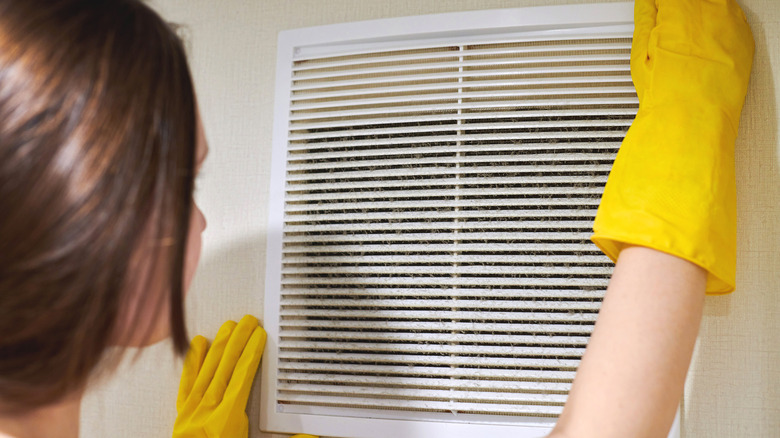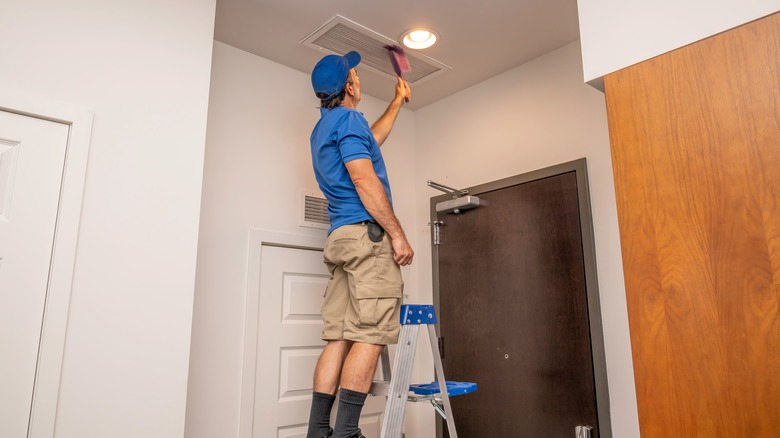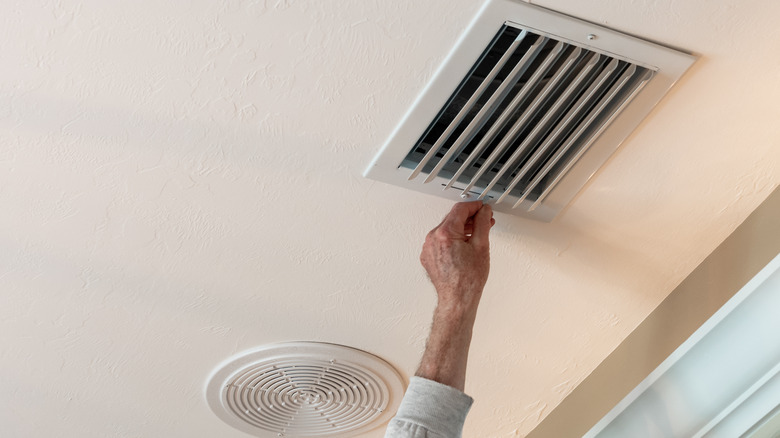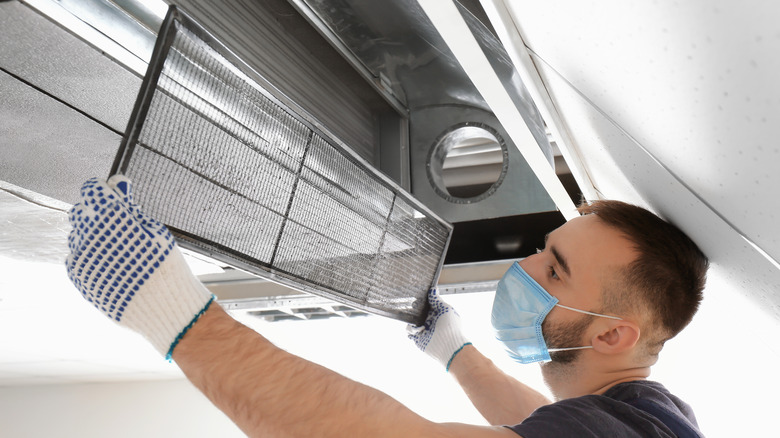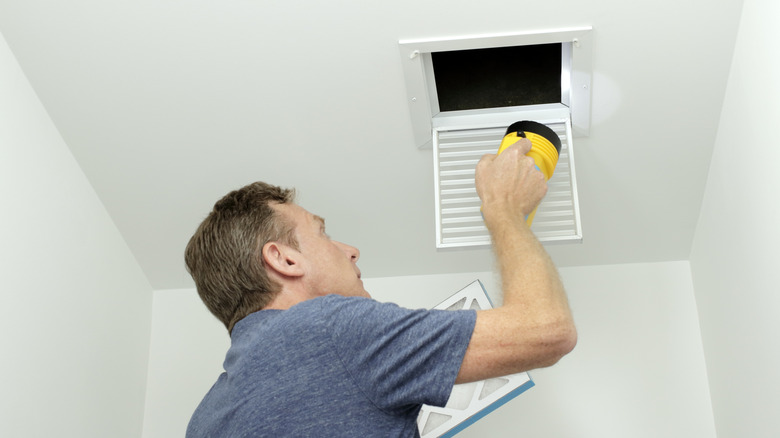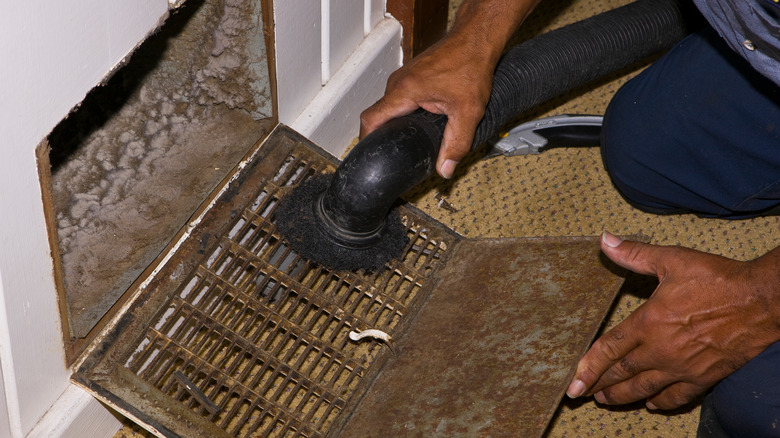How Much Does It Cost To Clean Air Ducts?
The air ducts in our homes play a vital role; in fact, these hidden pathways work extra hard all year round to give us the comfort that we need. During the cold months, ducts move heat through the house, and in the hot summer months, they supply cool air. Because air ducts work around the clock 12 months a year, it is expected that different types of dirt, like spider webs, dust, debris, pests dropping, or even pet hairs, to accumulate over time. Therefore, Environmental Protection Agency (EPA) advises that the air vents in our homes should be thoroughly cleaned when there is evidence of mold growth or dust dropping from the vents.
On the other hand, National Air Duct Cleaning Association (NADCA) recommends cleaning the vents at least once every 3 to 5 years. It is worth mentioning that ultimately the decision will be yours to make. Nonetheless, the cost of cleaning air ducts in your home is dependent on several factors unique to every household, but the average cost of cleaning them is between $269 and $489 (via HomeAdvisor).
Factors for costs
While the national average cost for cleaning air ducts is a few hundred bucks, the overall price is likely to deviate from this price, depending on several factors. Bob Vila details some of these aspects as follows.
Size of the ductwork
A duct cleaning company charges for this type of service either by square feet or by the number of vents in the house. Ductwork is the connection between vents and the HVAC system, and larger homes tend to have many supply vents. On average, duct cleaning companies charge between $25 to $50 for every vent. On the other hand, most professional companies charge between $0.15 to $0.25 per square foot. So, however much you end up paying will depend on the size of your house or the number of vents connecting each room to the HVAC system.
Contamination level
Plenty of dirt can accumulate in the ducts over time, like pollen, rodent droppings, and so on. This means that different cleaning techniques may apply depending on the level and type of contaminants in the air ducts. More contamination might mean more work and equipment; therefore, the cost might increase. It also goes without saying that the more the accumulation of contaminants, the more time it is going to take to clean the air vents.
Accessibility
Typically, ducts are hidden from sight, and the common entry points are either in the attic or the basement. So, if the ductwork is easily accessible from any of these points, that makes the task a lot simpler and less expensive. However, if gaining access to the ducts requires extra effort and crawling into tight spaces, you are likely to pay more for the service. So, in order to evaluate the overall scope of work necessary, also consider the access to the cleaning location as a key factor.
Labor
Most companies hardly charge by the hour of work; instead, the overall cost is determined by the number of vents or the square feet of the house. Other than the factors mentioned above, the labor cost will also be determined by other conditions unique to your household.
Geographical location
How far you are from the cleaning company will come with extra costs. Most companies don't charge if you are located within a given radius from their station. However, the cost rises as the distance from their station also increases.
Additional cost factors
Other than the basic factors that influence the cost, there are other costs you ought to consider when budgeting for air duct cleaning. According to The Spruce, these are some of the additional cost considerations.
Video inspection
Inspection is usually done before cleaning starts. If you are lucky enough, some companies don't charge extra for inspection; you will only pay for cleaning in this scenario. A video camera is used to check for the extent of contamination or the existence of pests in the ducts. Typically, the cost of inspection ranges from $200 to $500, especially if it also involves the inspection of the furnace and the AC unit.
Mold remediation
Removal of molds from the ducts is separate from a duct cleaning. It involves using chemicals and other equipment to get rid of it for good. Depending on the company, mold removal services can cost around $2,000. But that's not all; you will also need to consider air duct sanitization, which costs an extra $70 to $150. This process is necessary to make sure the molds are gone for good, and it involves an antibacterial chemical sprayed on the duct walls to kill the mildew.
Air duct sealing
Depending on the condition of the ducts in your home, you may also need to seal the interior walls. Sealing the air ducts prevents any material, whether dust or debris, that accumulates in the ducts over the years from leaking. The average cost of sealing the air canals should be between $1,500 to $4,000 for every treatment. However, be sure to check whether the sealing of the air vents will invalidate the warranty.
AC and furnace repairs
This might not be necessary or applicable for every household. Nonetheless, if the air conditioning unit or the furnace is faulty, the technician may need to repair them at an extra cost. A basic AC repair costs approximately $160 to $550, and repairing the furnace is almost the same cost ranging between $130 to $500. Remember, it might be cheaper to use the same company for repairs instead of hiring a different one.
Types of air ducts
The type of ductwork in your house will determine the complexity of the cleaning process and, ultimately, the price. Therefore, it is important to understand the different types of air ducts that are available. There are two main types of air vents: rigid and flexible, but Ductworks Inc. has a detailed breakdown of the types of ducts and their advantages.
Sheet metal air ducts
Compared to the other air vent types, sheet metal air ducts are the most durable. This type of air vent is made of either galvanized steel or aluminum. It is also the most popular option of the rigid air pipes because of its non-porous nature, therefore, eliminating any chance of micro-organism growth in the interior. In addition, thanks to construction materials, you get better air quality and lengthy service.
Fiberboard air ducts
The fiberboard air duct is made of compressed and sealed fiberglass fibers. The compressed fiberglass fibers are well coated with a layer of foil that keeps air and moisture away from the board. Other than supplying air to and from the HVAC system, the fiberboard also has thermal advantages when installed. However, the major downside of this type of air duct is that it is prone to the growth of molds and mildew. Also, the rough nature of the board gets in the way of the air stream, compromising the HVAC efficiency (per City Heating and Air).
Fiberglass lined air ducts
Because of the nature of the materials for making sheet metal air pipes, fiberglass lining is recommended for several reasons. First off, the sheet metal duct is fitted with fiberglass material either from the inside or outside. The fiberglass layer prevents condensation if the temperature is too cold, insulates the air duct, keeps the air at the right temperatures, and deadens the annoying sounds from the HVAC system. The major downside of this type of air duct is that the fiberglass material disintegrates and gets into the airway over time. Breathing in fiber materials for a long time is hazardous to human health.
Flexible line air ducts
Flexible air vents are essentially plastic cylindrical tubes made up of steel wire helixes that make the tube elastic. This type of air duct is quite easy to install because it bends over structures, making it ideal for those tight and hard-to-reach corners. However, it is important to highlight that the ridges along the interior of the ducts cause friction and could compromise the efficiency of the HVAC. Also, the flexible structure of the duct is prone to bends that might restrict airflow.
Why you need to clean the air ducts
The comfort of your house can be disturbed by the smallest details like poor air quality. However, since it might not be quite evident that the air ducts need maintenance, here are clear telltale signs that might tip you off (via National Air Duct Cleaning Association).
Rising energy costs
The HVAC system is a major contributor to your monthly electricity bills. If you have been living in the same house for several years, you can almost predict how much utility bills you expect for specific months. However, when there is a noticeable change in your bills, you better check the HVAC system. For example, when the air duct is clogged with limited space for air circulation, the HVAC works harder, consuming more energy to circulate around your home.
Recent construction or renovations in your home
If your house has undergone recent construction or renovations, it would be best to consider cleaning the air ducts immediately afterward. Dust and other debris will find their way into the vents despite how careful the construction workers are. You don't have to deal with poor quality air right after a renovation; this is the best time to check the ducts if you have never done it before.
Rodent infestation
Rodents always have a way of getting into those hidden spaces like the air ducts. Other than making disturbing noises when they run around in the vents, they also leave droppings that contaminate the air in your house. The presence of rodents in the air pipes is not something you should ignore, lest you deal with other significant structural damage that will require expensive repairs. So once you hear rodents running up and down the air vents, take it as the perfect excuse for that necessary air duct cleaning.
Benefits of cleaning the air ducts
Is cleaning the air ducts in your home worth the time and money? Air vents are always tucked away from our sight; therefore, maintenance is usually at the bottom of our priority list. However, cleaning these pipes in our homes is quite necessary, and you cannot overlook the benefits. Bob Vila details how cleaning air ducts can improve the quality of life in your home or workplace.
Removes unpleasant odor
There are so many sources of unpleasant smell in our houses, right from pets, dust, or even molds. In addition, the accumulation of dust and other debris in the air ducts can add to the foul smell. Professional cleaning of the ducts in your house will eliminate all the molds and any other debris that trap the unpleasant smell, getting rid of the bad odor completely.
Reduces allergens
A dusty air duct is home to various allergens and micro-organisms like pet hair, mold, or pollen. These allergens are likely the cause of frequent allergic reactions, especially in people with asthma or other autoimmune diseases. A dirty duct distributes these allergens throughout the house; hence, cleaning the air vents in your home might just be the best remedy.
Better airflow efficiency
Accumulated debris from pest droppings or spider webs gets in the way of air flowing to and from the HVAC system. This causes the HVAC unit to use more energy than usual just to force air through the limited space in the ducts. The extra energy will eventually be obvious in your monthly utility bills. Cleaning the air ducts will leave the airway free from debris and allow the HVAC system to operate at optimum efficiency.
